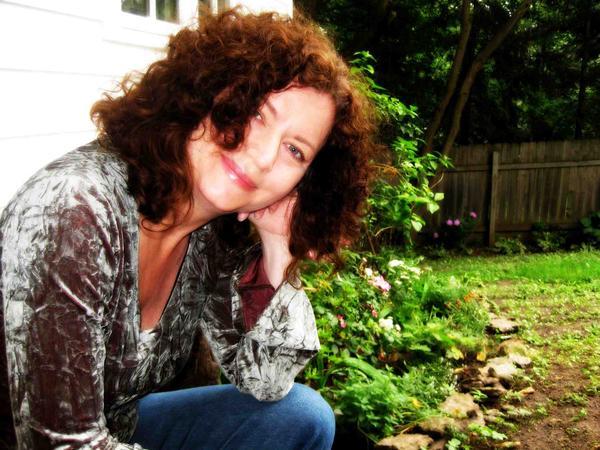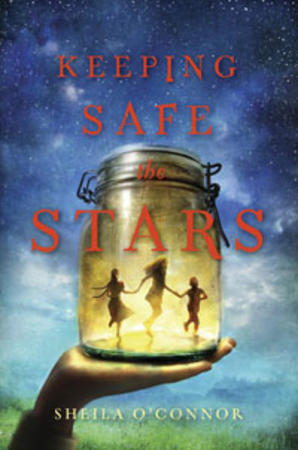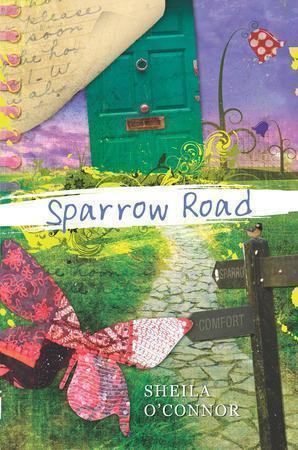 Sheila O’Connor is the author of “Keeping Safe the Stars,” “Sparrow Road,” “Where No Gods Came” and “Tokens of Grace.” The following is a complete transcript of her interview with Cracking the Cover.
Sheila O’Connor is the author of “Keeping Safe the Stars,” “Sparrow Road,” “Where No Gods Came” and “Tokens of Grace.” The following is a complete transcript of her interview with Cracking the Cover.
Have you always wanted to write? Why?
I wanted to write before I could write, before I could read. I have a very early pre-school memory of listening to Betsy-Tacy and having a deep pull to write a novel of my own. Honestly. I knew I wanted to write a long story with characters and lives and adventures, a story that someone, somewhere else, could imagine through my words.
Why write for middle readers?
The middle grade years were incredibly alive for me. I had complicated friendships, amazing adventures. Those were also the years I moved from a small town to a city, my mother remarried, and I began to explore the larger world alone. Everything felt possible for me, and I love that possibility in fiction.
Where did the idea for “Keeping Safe the Stars” come from?
Many many years ago, on vacation in northern Minnesota, we pulled into a place that sold pony rides. It was run by two young sisters, with no adult in sight, and these two girls in bare feet walked a little pony around their dusty lot. Years later, I thought about those young sisters: Who were they? Why did that run that business alone? And in those questions, Keeping Safe the Stars was born.
How long did you work on Keeping Safe the Stars?
I’ve lost track of time these past few years, but I imagine it was two, maybe three years. I wrote it and rewrote it and rewrote it, and then just when I thought I was finished with it, I threw the whole book out and started over.
Why set it during the Nixon era?
For me, historical time period is always an element of setting. I’m interested in the ways the larger world presses in on our personal realities, even the lives of kids. When I began the book, I had a sense it was set in an earlier time, in part because of the details that were finding their way to the page. But, it wasn’t until I wrote the scene where Pride and Nightingale are in the café listening to the news, that I discovered Nixon was resigning. When I write, I try to stay open to those turns, to let the story find its own truth; once I knew the Nixon resignation was happening, I paid attention to the ways it would effect the action of the story, how it would inform the characters’ conflicts.
 Where did the different characters come from? Are they based on anyone you know?
Where did the different characters come from? Are they based on anyone you know?
Well I mentioned they were inspired by those two sisters—but I have no real knowledge of those girls. I didn’t know the Stars until they came alive on the page. I like to meet my characters more than create them—I meet them and I grow to love them.
Who is your favorite character in the book? Why?
Oh dear, in this book that’s an impossible question because who can pick a favorite among the Stars? I love them all for different reasons: I love Pride’s determination and protectiveness; Nightingale’s serious intelligence and truth-telling; Baby’s energy and open heart. I love Old Finn’s integrity—the way he led by example, and I love the people who come forward to help these remarkable kids.
What were the challenges working on “Keeping Safe the Stars”? And conversely, the highlights?
The early drafts are always a challenge for me, finding the story, getting to know the characters, discovering what it is I want to say. I knew they were in trouble from page one; I didn’t know where the trouble would take them. One of the highlights was going back to 1974 and having it come alive for me again.
If children of today were placed in the same situation as the Stars, how do you think they’d respond?
This is an interesting question, and one I hope each reader will carry forward when the book is finished. I also hope it will inspire conversations in book clubs, and classrooms, among families and friends. In truth, I think the answer is as varied as the reader. There are children today, lots of children, who have the same survival skills as the Stars: they know how to take trains and buses, buy groceries, earn money. They have siblings they protect, they know how to cook and clean. On the other hand, there are children who don’t know how to fry an egg or wash a dish. So how a child might survive depends upon their skills and also their connection to community. That’s part of what the Stars need to discover—self-reliance can only go so far, sometimes you have to learn to ask for help.
You translate complex relationships and situations into something accessible for young readers. Is that a conscious act or does it come naturally?
First, thank you for saying that. It’s a huge compliment to me—both that the relationships and situations are complex, and also that they’re accessible. I was a complex kid; my own kids were complex. I’ve spent the last several decades working with kids, and I know their emotional lives are incredibly complex. For me, that’s part of what’s exciting about the age—the growing awareness of life’s many complexities. I try to honor that reality, to tell a story that respects the reader’s intelligence and heart.
 What do you hope readers will get out of “Keeping Safe the Stars”?
What do you hope readers will get out of “Keeping Safe the Stars”?
The Stars have lively personalities, they’re very entertaining, and I hope my readers will enjoy them, their generous, free-thinking spirits and their adventures. Beyond that, I have the hopes I have with every book I write: I hope some readers will see their own story in book, the story of strength and survival, and their own heroic courage; and I hope some readers will come to understand where that kind of courage comes from, how it’s possible to rise to the occasion, and triumph, and get help along the way. And of course, the power of family loyalty and love.
Why do you think your writing appeals to young readers?
I like to think it’s because I’m telling them the truth in all of its complexity; I’m writing a story they can trust. I have tremendous respect for young people and I hope it shows.
Looking back, how has your writing evolved from when you first started until now?
You know, it’s funny, I’m finishing my fifth novel, I’ve written plenty of novels that I’ve shelved, and every book still feels like the first. I learn new lessons with each book, but then I start a new one and new challenges arise. So I can’t say I’ve evolved; I think I’m still working in the dark.
What are you working on now?
I’m in deep revision with a new middle grade novel, but I can’t say much about it until I have a better sense of what it’s going to be. So I’ll just give my usual answer: a story about kids. That seems to work for every book I’ve ever written.
Did you have a favorite book or book that really resonated with you as a young reader?
Oh I had many, but this week I’ve been rereading the Boxcar Children in preparation for a conversation with Patricia MacLachlan. I read that book when I was a brand new reader, many years ago, when I was learning to navigate the world without a lot of parental protection. It was a lonely, difficult time, and I loved that book because it made me see my own adversity as adventure. It also made me long for more adventure.
